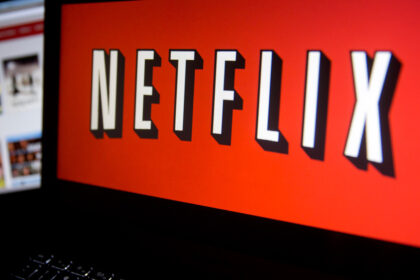
Will #Netflix enjoy the same success in #India as it did in the #US
Netflix, Inc. (Netflix), the world’s leading provider of subscription video on demand (SVoD), launched its Indian platform on January 6, 2016. Due to its huge population, India represented a lucrative market. Furthermore, the younger generation in India had dynamic consumption patterns that were comparable to those of Western consumers, giving Netflix another reason to invest in the country.
However, the global leader in video streaming has been in India for a couple of years now… yet the customer acquisition pace that it has garnered so far is not similar to the pattern that it has followed in the US where it just swept the market off…. So why is it that Netflix’s normal marketing practices don’t seem to be cutting much ice in India? at least so far…
Before that lets understand the dynamics of the Indian Market. The country’s online video market in India is valued at over $700 million, is expected to grow to $2.4 billion in value by 2023
Hotstar promoted by the Star Group has a market share of about 70 percent of the on-demand local streaming services with 150 million monthly active users
Balaji Telefilms, known for producing some of the most watched family TV shows in India for the various broadcasters has amassed over 2.5 million paying customers on Balaji, their OTT app.
The other major players in the market are Z5, Sony Liv and Voot from the other three major broadcasters in India
You Tube from Google has been in India for a while and has about 225 million monthly active users with keen shift being seen towards regional content in the last one to one and a half years after the drop in pricing in data after the launch of Reliance Jio which has seen the cost of 1gb of data drop to less than Rs 10 one of the lowest in the world due to the intense competition in the telecom field
One of the primary reasons that led to fast growth of Netflix in the US was
1.Cost
The Cable Tv rates in India and among the world with an average monthly subscriber rate of close to Rs 225.
If we compare this with the US where cable Tv subscription costs more than $100, making offerings by Netflix, very appealing just from the price front. But in India, that price point has remained under $4 and so the price factor does not come into play at all in India.
The second biggest differentiator for Netflix in the US was
2. Content
Let us look at the same from the Indian context
Hotstar the biggest player in the OTT spaced offers a variety of local as well as global content at a much lower price. Its Rs. 199 (~$3) per month subscription plan gives access to TV Shows, Movies, Sports and News. While these categories appear in Netflix too, Hotstar offers content with mass appeal as well as content targeting niche audiences. In case of content with mass appeal, it streams live cricket matches and offers full coverage of IPL (Indian Premier league), and new Bollywood movies. Niche content includes Indian soap operas (shows telecast by parent firm – Star TV) that appeal to young and middle-aged working women as well as housewives, while stand-up comedy groups such as AIB offer appeals to young college students. Hotstar was also quick to grab the broadcasting rights for ‘Game of Thrones’ earlier this year, when the globally acclaimed TV show made headlines among the young audience of India.
Sports particularly live sports is a key driver in the increase in subscriber base in India. This has been seen with Hotstar during IPL and with the FIFA world cup with Sony live …Netflix as of now does not have any such property.
Netflix currently has 4,706 titles in its Indian library, which has grown fivefold since it entered the country two-and-a-half years ago. It has been trying to penetrate the fast-growing Indian market with original shows. Recently, it released a four short films series called Lust Stories based on women’s sexuality. The company is now releasing its first original Hindi series called Sacred Games based on a novel by Indian author Vikram Chandra but the gap in content is still very huge compared to the Indian players.
Further India is a very diverse market with very strong regional language preferences which will also need to be addressed to cater to the mass market segment…
Several of Netflix existing shows are licensed only for the U.S. and cannot be broadcast in other regions. This limits its content library until the company renegotiate the terms for these shows. Expanding its existing content to international markets like India will lead to higher licensing costs, impacting the margins negatively. Creating original, local content for each international market is also an expensive proposition, especially if the costs cannot be justified by a huge subscriber base like the present scenario in India
Netflix has been trying to address this problem in some other international markets like Poland and Turkey by introducing dubbing and subtitling while it has tilted towards local content in countries like Japan. When Netflix began to work with international rights holders, it often got translated subtitles that weren’t exactly up to par. To improve on the same now that the company is distributing its originals around the world, it is itself working with thousands of translators, Netflix has also improved its own internal translation tools. To further build a stable roster of global translators, Netflix even developed its own online test, dubbed Hermes, which the company launched to the translation community this month. Translators can use that online tool to improve performance of its future projects
3.Use of New Technologies to gain advantage
In order to continue ingenuity in their business model, Netflix is tinkering with different formats by way its consumers consume its content. Its newest innovation revolves around interactive technology and story branching options.
What if you could decide whether Frank Underwood from House of Cards should be locked in jail? Perhaps those adorable kids from Stranger Things should pursue another adventure? Netflix now has a handful of children’s shows with the ability for the subscriber to choose the way the story plays out. If this catches on, other adult-oriented shows will join in the experiment.
Netflix is growing rapidly, but the battle for video entertainment in India has just started.
Can Netflix keep up?
They’re on the right track but whether they will be able to enjoy success similar to that in India remains to be seen…Watch this space for more…



